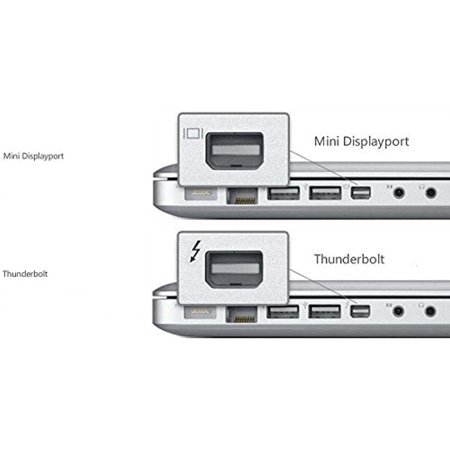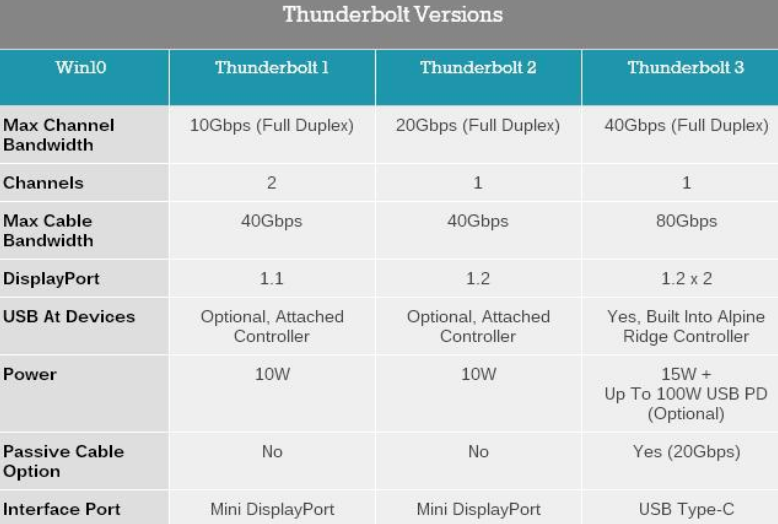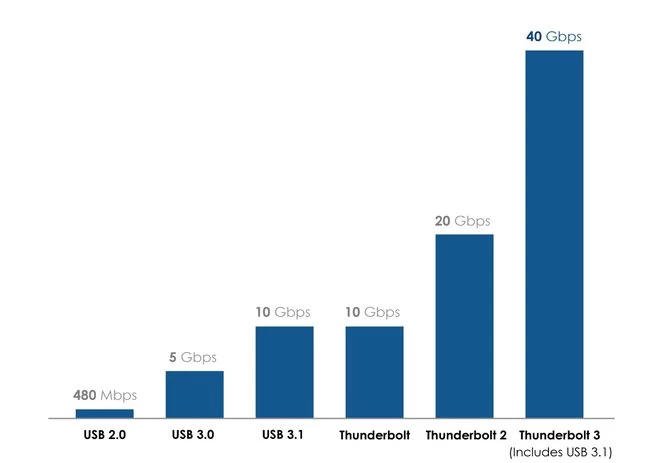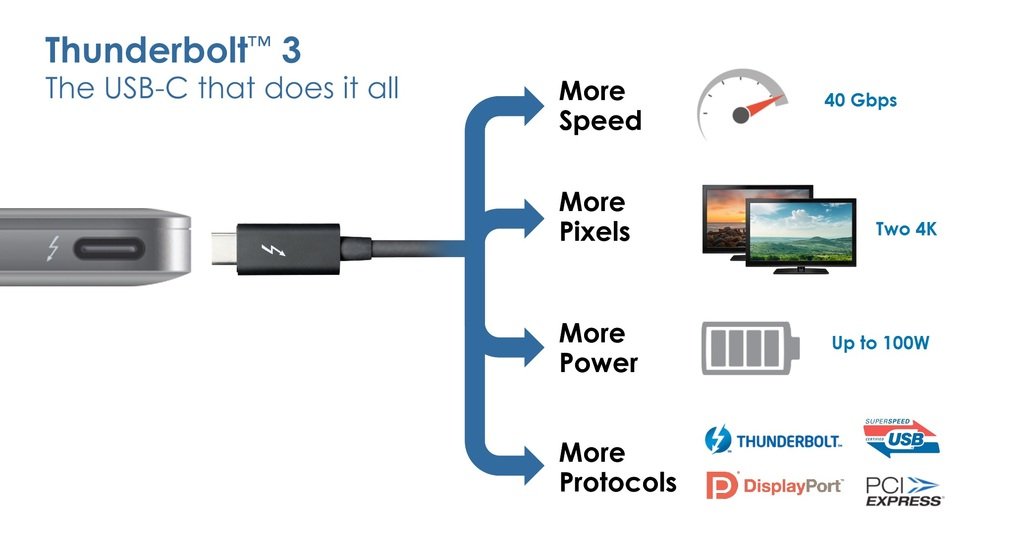Whenever a new notebook comes on the market, people who pursue efficiency will always ask if it is equipped with Thunderbolt™ 3? However, Thunderbolt™3 and USB Type C are often confused by users, so Thunderbolt™ 3 VS USB Type C, what’s the difference?
Speaking of Thunderbolt™ 3, we have to mention the first-generation Thunderbolt interface released by Intel in 2011. This is an interface that integrates the PCIe protocol and the DP protocol. The role of the former is to achieve a larger bandwidth of 10Gbps (traditional USB 3.0 is only 5Gbps) and to provide 10W independent power supply. The role of the latter is to be able to transmit video signals. Therefore, the initial shape of the Thunderbolt interface is the same as the mini-DP, and most of them are used on MacBooks.


The first is the upgrade of the interface port. The Thunderbolt™ 3 interface has changed from the previous mini-DP interface port to the common USB-C interface port. With the popularization of USB-C, the promotion of Thunderbolt 3 will inevitably accelerate.
The second is the functional upgrade. The bandwidth of the Thunderbolt™ 3 interface is upgraded to 40Gbps, and the power supply is increased to 100W. Note that it is to supply power to other devices, not to be able to charge. Therefore, laptops with Thunderbolt™ 3 interface may not be able to charge with PD.
Although Thunderbolt™ 3 3 and USB Type C have the same interface, they are paired with different transmission protocols, namely Thunderbolt™ 3 and USB 3.1.
Despite the differences in transmission protocols, Thunderbolt 3 and USB Type C can share the Type C interface. For example, if the user connects the USB Type C port of the laptop to the Thunderbolt 3 port of the monitor, it can also be used for normal expansion. The only difference is that due to the bandwidth limitation of USB3.1 Gen2, the transmission bandwidth will be reduced from 40 Gb/s to 10 Gb/s.
More and more devices are now equipped with USB Type C interfaces, but careful users will find that some USB Type C only supports charging and data transmission, and does not support video signal transmission. That’s because the USB Type C interface has multiple protocols, so not all USB Type C interfaces are fully functional. If users want to connect a laptop with a USB Type C interface directly to a monitor with a Thunderbolt™ 3 3 or USB Type C interface, they must ensure that their laptop’s USB Type C interface supports DisplayPort Alt Mode, which allows native DisplayPort HD The digital signal is transmitted via USB Type C.

So since Thunderbolt™ 3 is powerful? What can it do? I’m sure below picture can answer your questions:



